|
We typically train on extricating horses from a trailers involved in accidents, however during our October, 2017 training, Kerry Tuckett from Lander County (Lander SAR / Rocky Canyon Rescue) proposed that we add a human element. We have since created various scenarios and were able to experience the challenges of protecting and extricating a person from inside a confined space with a downed horse.
Please Note: Rescuing human victims sharing confined spaces with large animals can be exceptionally dangerous. There are many issues to consider when executing these operations. The scenarios and techniques shown in this information sheet are for illustrative purposes to assist teams that wish to create their own rescue scenarios for training purposes. Each type of trailer, accident, and the issues presented can vary. The techniques illustrated here are ones that applied to our particular scenarios. In an actual event rely on your basic technical large animal rescue and EMS training procedures.
For this exercise we utilized the horse training mannequin (provided by the Helen Close Foundation) and one of the team members played the role of a victim who was down inside the trailer. We first loaded the mannequin into the trailer, uncoupled him from his "skate board, and positioned him as if he had fallen while tied fast to a forward tie ring. In our first scenario, a horse owner entered the trailer to assist the horse, was knocked down and was unconscious in the front of the trailer with one leg in between the horse's forelegs.
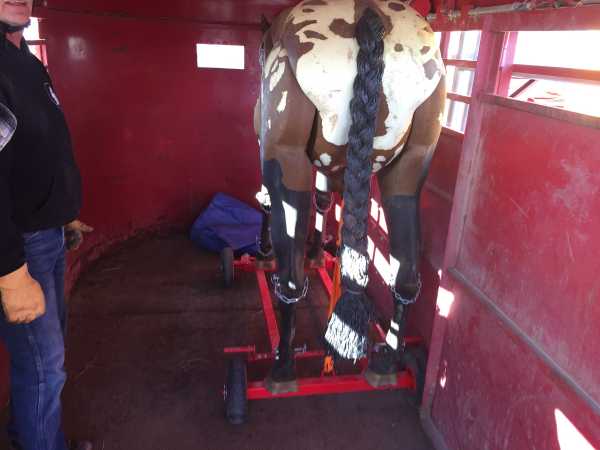
As a general rule we would want the horse sedated prior to entering a confined space, however our scenario required us to make immediate access to the human victim as might be safe and practicable. Even if a veterinarian was already at the scene, we would have to evaluate whether the veterinarian could sedate the horse safely before being restrained (i.e., not cause the horse to react and flail legs) that could further endanger the victim and/or place the veterinarian at risk. Also, as we have learned in actual field work, the fact that a horse has been sedated is not a guarantee that it won't react and/or flail its legs with significant force.

Our first order of business is always to size-up the the scene, assess the situation without potentially agitating the horse and causing further injury to the human, and to secure any loose or moving objects such as the rear trailer gate.
If the trailer is still hitched to the tow vehicle, the keys should be removed from the tow vehicle and the hood raised. Chocking the tires is recommended.
If the trailer is detatched or is any other way unstable, tires should be chocked and step chocks driven in place to ensure that the trailer doesn't move or shift during the rescue operation.
(See Overturned Vehicle Stabilization for additional information.)
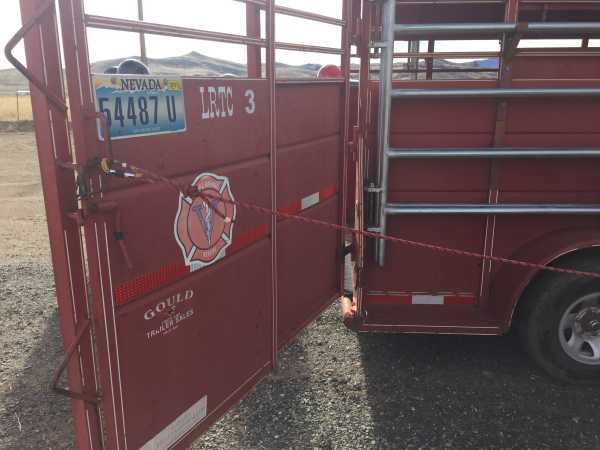
In this first scenario, the layout was such that the human victim could not be safely accessed without first restraining the horse's front legs. (Even if a rescuer could safely enter the trailer to provide an initial patient survey and C-spine precautions, unrestrained horse legs intertwined with the victim's legs are a serious hazard and must be secured.) Regardless, these limbs need to be secured quickly in order to safely render aid and extricate the victim.
Drawing webbing across to secure the legs.
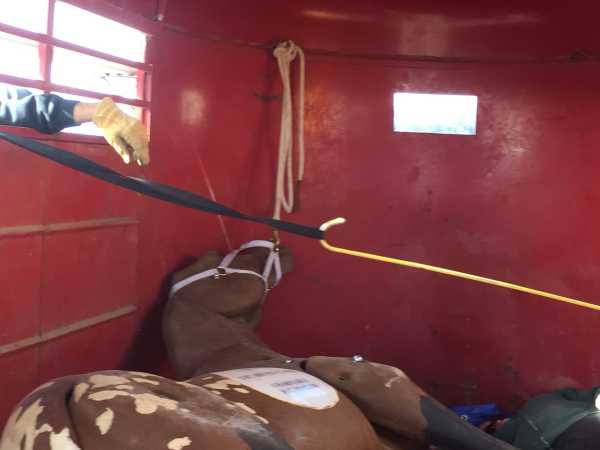
Forming a complete double wrap around a foreleg.
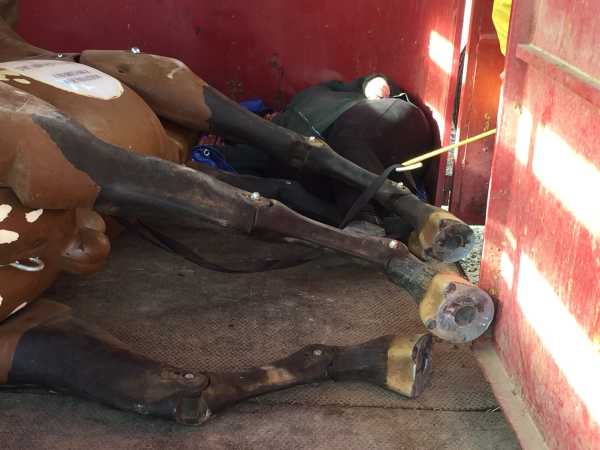
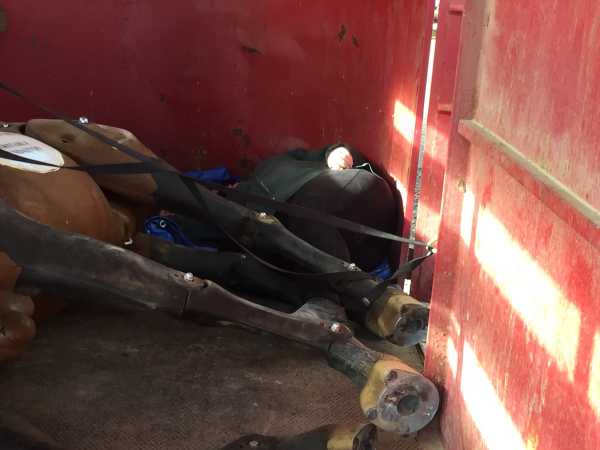
One leg secured. Carefully raising the victim's leg to secure the second foreleg.
(This operation was necessary as the horse's leg tended to snag on the victim's boot.)

Both legs secured. Now the victim can be safely approached and managed.
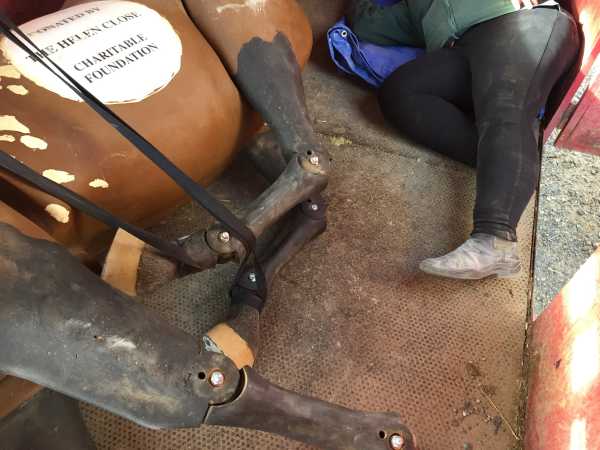
Webbing secured outside the trailer.
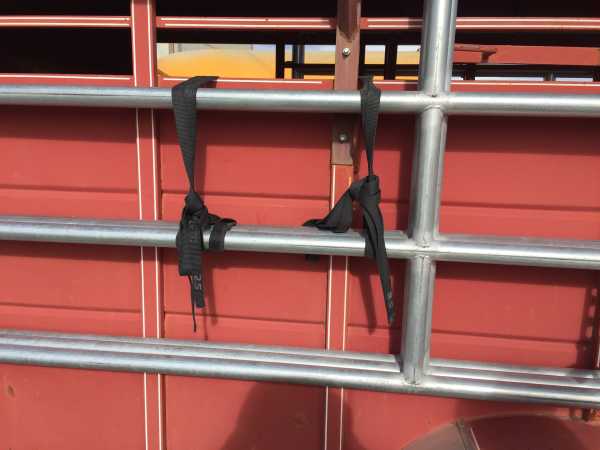
ALWAYS REMEMBER: Horses are animals that tend to exhibit three behaviors, flight, fight or freeze. A trapped horse may present in a "frozen" state, but flight or fight could instantly be triggered by some external stimulus, or the horse may simply try again to regain its footing. Be aware of the possibilities and avoid triggering an undesirable response.
| 











